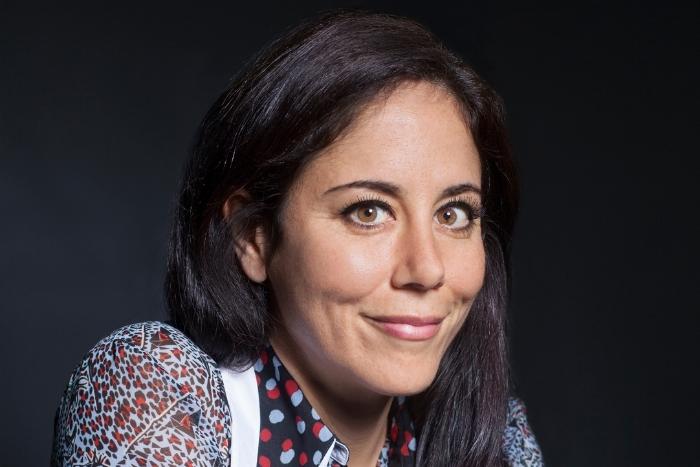With the announcement of Abu Dhabi Art 2022 imminent, Team Yalla speaks to the Director of Abu Dhabi Art, Dyala Nusseibeh.
Are the key objectives for Abu Dhabi Art different today in comparison to when you first joined as director in 2016?
No, as I responded in part to the DNA of The Department of Culture and Tourism – Abu Dhabi (DCT), the organiser of the fair. DCT is inherently involved with community and educational outreach, as well as supporting the grass roots ecosystem in the wider Emirate of Abu Dhabi.
Looking at the activities and aims of DCT as a whole, whether it is looking at the preservation of world heritage site sites, the launch of compelling world class museums or the organisation of cultural programmes, these elements are all in conversation with each other, representing both an ambition to move forward and to preserve the heritage of the country.
DCT is all about cultural production, knowledge production, heritage and conservation, which in part are the objectives of the fair. The fair itself was launched under the name Abu Dhabi Art in 2009; prior to that, it was Art Paris.
When I joined in 2016, I was thinking about how, in a way, Abu Dhabi Art could contribute to the wider aims of DCT. From its inception in 2009, it was meant to be a place that engaged with audiences for future museums, a place that was building support for artists from the emirates, and a place that was supporting the art market, and also helping the museums acquire works.
Therefore, Abu Dhabi Art was already very much part of the ecosystem and my role was just seeing what can we do more of, what can we do better and where can we support more; it was evolving what already existed rather than doing something from scratch.
What are the priorities for Abu Dhabi Art? What would you like to see more of?
Looking at it from the point of view of an art fair, a main driver is to support artists and galleries in the UAE.
There are some top visual art programmes at universities such as Zayed University and New York University Abu Dhabi, and others, that we have collaborated with a lot. When artists leave university and before they are at a quality and a standard whereby they are ready to be represented by galleries, there is a small gap in how they can grow professionally between one and the other.
Of course, there are some grassroots movements addressing this.
For example, Bait 15 was set up as a shared space for three artists to practice together. There is also Warehouse 421, which has amazing artist residency programmes and the Cultural Foundation has, from a couple of years ago, started doing wonderful artist residency programmes, all of which you are seeing being built up more and more.
We are all working together to help bridge this gap. Another small gap is art criticism. There is a culture of politeness in the UAE and therefore, a hesitancy to really look at the artist and ask questions such as ‘what are you saying with this’, ‘can we critique it’. This is something that could gently evolve.
Other than that, we are incredibly fortunate in the UAE that there is so much recognition for art, so much government support for artists. I think there are few places in the world where emerging artists get the kind of opportunities and support for commissions available here.
Tell us more about the education programme that Abu Dhabi Art has in place.
When you talk about art being for everyone in practical terms, it is about putting art into different contexts; not just that you have to go into a museum space, into an art fair but that art is brought into your life, in a school, studying in a class or if you are going to the Al Ain Oases for a walk with your family. One of the reasons that we create installations in public spaces is that we are bringing art to people.
We do outreach programmes to schools and we have around 10 thousand students that visit the fair in one way or another – sometimes through virtual tours; others in person – to see the art and participate in workshops and tours, which are available at primary school and secondary school levels. At university level, we offer the art and technology programmes every year whereby we invite one to three artists to visit a university to do a residency and connect with students.
Khalifa University was the first partner a few years ago and this year we are teaming up with five colleges including two leading technology universities – and bringing different artists to work with them.
We also have The Abu Dhabi Art Pavilion Prize whereby we invite architecture students from different universities to submit proposals for a pavilion and we realise the winning proposal at the fair each year; it also is giving them something to see at the fair which speaks directly to their field of architecture and it engages them and gives them a platform.
Last year we launched a digital prize whereby participants had to come up with their own ideas about how to make our website more relevant for youth.
It is not just about relying on Abu Dhabi Art conducting its own programmes, as DCT Abu Dhabi Education Department provides a lot of the tours and so on, thanks to a brilliant lady called Ranya Nasser who runs the department and her team. The department comes up with great ideas on how to work with the schools they already work with, and on and around the artworks coming to the fair. This is how as an art fair we are a bit different as we are part of DCT, so we can work together with other departments within that entity.
For more information about the fair, visit abudhabiart.ae


